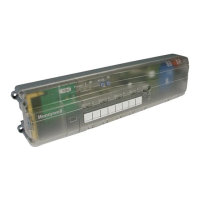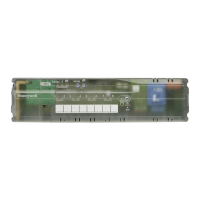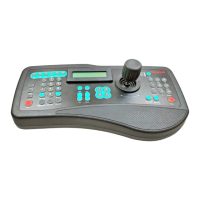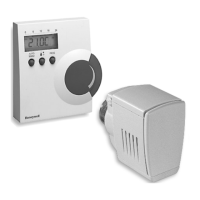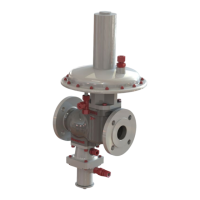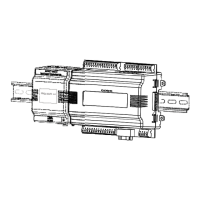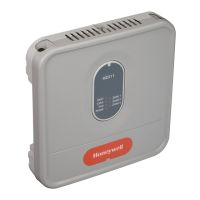HC900 Control System Architectures - Non-Redundant Controller and Non-Redundant IO
Revision 1.9 HC900 Process & Safety Controller Safety Manual 13
01/14
Non-Redundant Controller and Non-Redundant IO
The HC900 control system is an integrated loop and logic controller that is designed specifically for small- and
medium-scale unit applications. It comprises a set of hardware and software modules that can be assembled to
satisfy the requirement of any of a broad range of safety and process control applications. The HC900 control
system can consist of a single rack, as indicated in Figure 1, it can be networked with other HC900 control systems
via Ethernet links to expand the dimensions of control over a wider range of unit processes, as indicated in Figure 2,
support a single process with redundancies, as indicated in Figure 3 or provide stand alone safety or mixed safety –
process applications as shown in Figure 6. A feature summary list is provided after these topologies.
The HC900 Controller design enables users and OEMs who are adept in safety system integration to assemble a
safety system that fits a broad range of requirements. Any configuration can be readily modified or expanded as
requirements dictate. In initial configuration and in subsequent modifications, the HC900 Controller affords an
optimum balance of performance and economy.
Configurations such as those shown in Figure 1 and Figure 2, as well as many variations, can be assembled from
modular components. Many of the components are available from Honeywell, and some are available from third-
party suppliers. These modular components are available in any quantity and mix that make the most sense for a
given application.
As indicated in Figure 3, the HC900 Controller includes provisions for communication via Ethernet with host
systems such as the Honeywell Experion HMI and other HMI software that supports Ethernet Modbus/TCP
protocol. Also, the communication structure of the HC900 Controller enables remote placement of input/output
components, allowing significant economies in cabling and wiring.
Redundant Controllers and Non-Redundant IO
The following six components refer to:
– Single process with redundancies (C75S CPU) only.
•
Redundant CPUs - Redundancy is provided by two C75S CPUs operating in a controller rack; this rack
does not have I/O. A Redundancy switch module (RSM) sits between the CPUs.
•
Redundant CPU Power - Two power supplies, one for each C75S CPU.
•
Redundant CPU-I/O connection – Each CPU has its own 100 base-T Ethernet physical communication
link with one or more racks of I/O. Multiple I/O racks require Ethernet switches.
•
I/O racks – 8-slot racks w/redundant power supplies are shown but four additional racks sizes /types are
available, 4 – slot rack, 8- slot rack, 12-slot rack and 12-slot w/redundant power supplies. A Power
Status Module (PSM) is required with the redundant power supplies rack. High and low capacity
universal AC power supplies are available as well as a 24V DC Power Supply.
•
Redundant Networks for Host communications - Redundant Networks for Host communications are
provided on the C75S CPU. Both network ports are continuously active on the Lead controller. The
network ports on the Reserve CPU are not available for external communications. Experion HS and the
900 Control Station (15 inch model) support redundant Ethernet communications and automatically
transfer communications during a network failure.
•
Scanner 2 (S75S) module – provides 2 ports, one for each CPU connection to I/O.
•
Process Applications can be run on the Safety system with separate process IO modules.
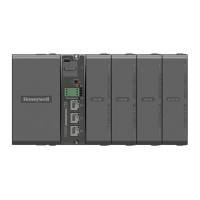
